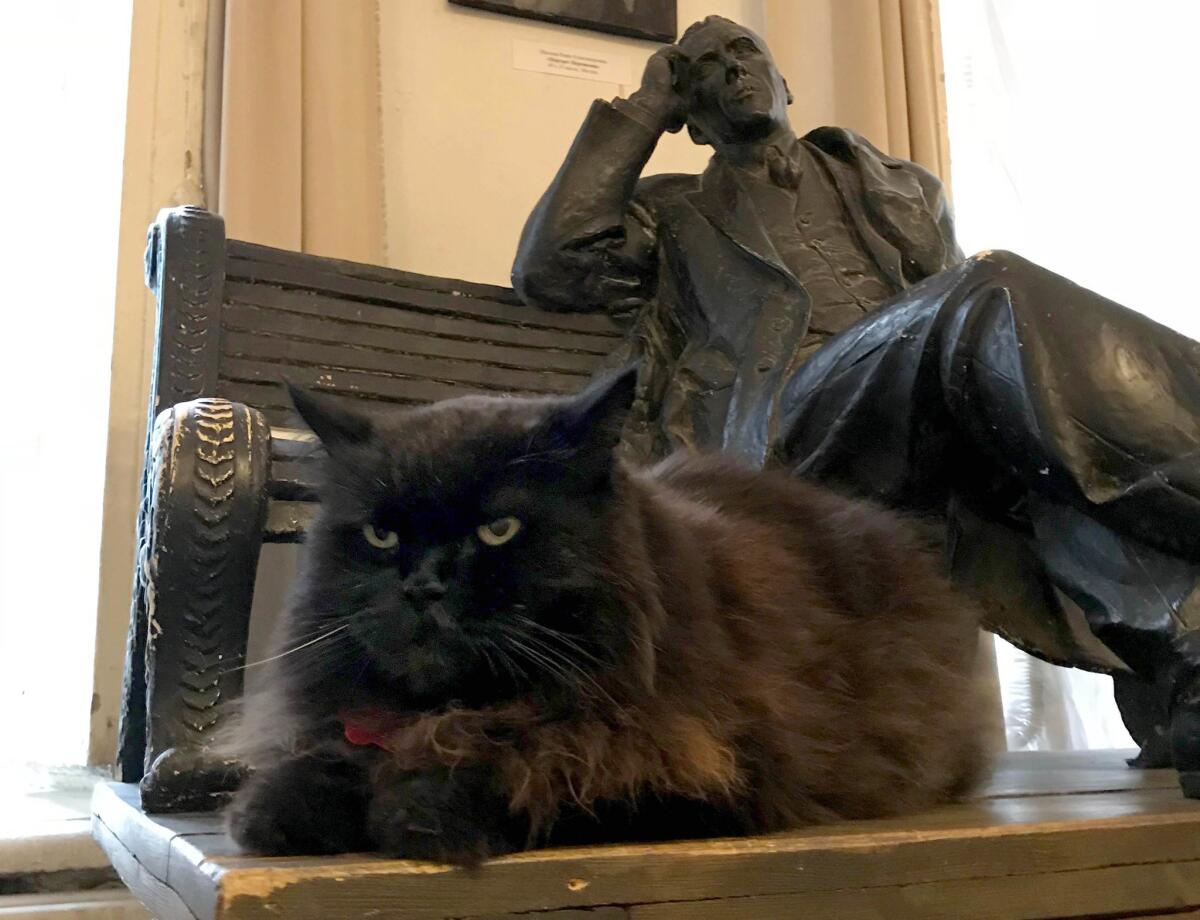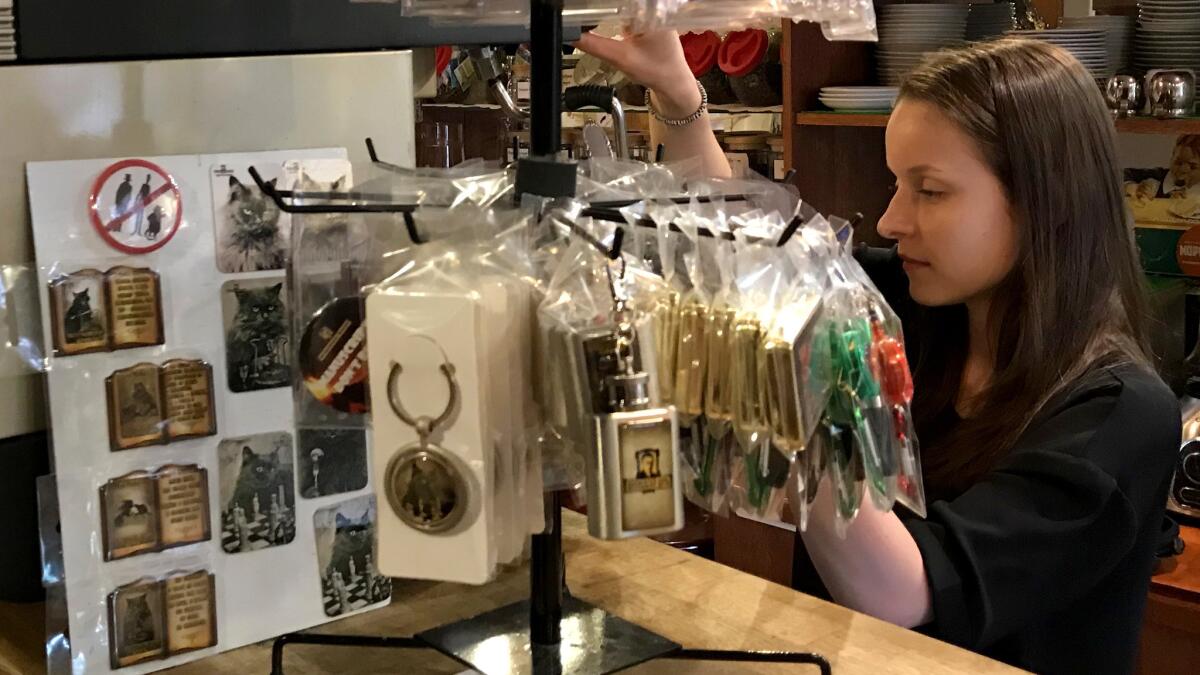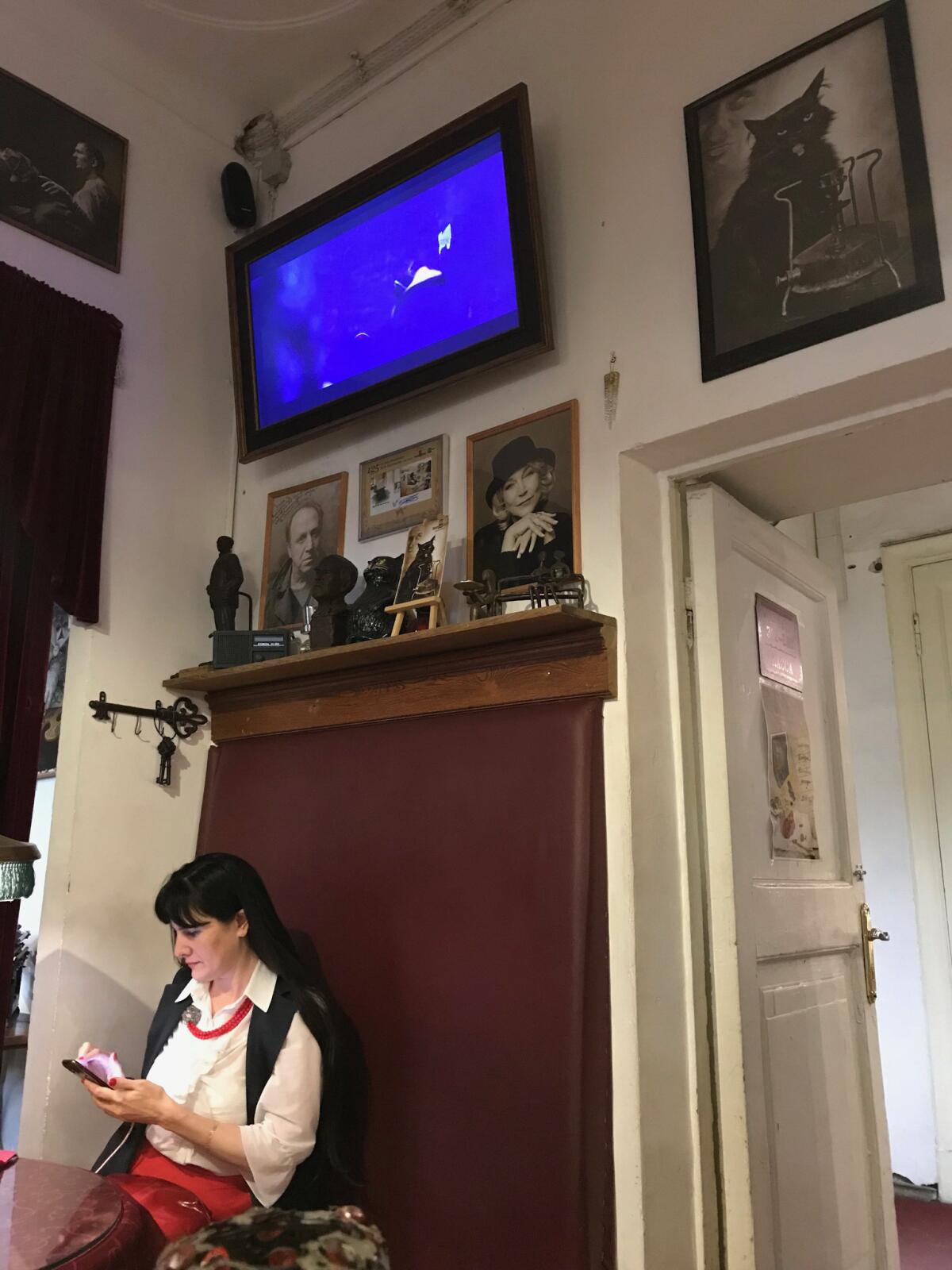A cat (but no ordinary cat) is kidnapped, and Moscow holds its collective breath

- Share via
Reporting from Moscow — On Aug. 1, the Mikhail Bulgakov House Museum posted an alarming announcement on its website and social media accounts.
“An employee of Bulgakov’s House has been abducted!” the museum said.
The post was no joke, nor was it an ordinary museum employee. The missing co-worker was Begemot the cat, a permanent fixture of the museum with nearly as rabid a following as the author for whom the entire exhibit is dedicated.
A little background may be helpful here.
Bulgakov was one of the Soviet Union’s most influential, and subversive, authors, best known for his magical realist classic, “The Master and Margarita,” which was set in the author’s Moscow neighborhood. The book deals with good and evil, and features the devil strolling through the leafy park surrounding Patriarch’s Pond, a few blocks from Bulgakov’s apartment.
The novel is believed to have been written during Stalin’s purges in the 1930s, and was banned during the Soviet era. Many believe it to be a satirical look at life under the communist system.
One of its main characters is Begemot (Russian for behemoth), an enormous black cat that walks on two legs, likes vodka and chess, can take on human form, and frequently mouths off obnoxiously.
So of course the museum has a cat named Begemot.
To say that Begemot is part of the museum would be an understatement. In many ways, Begemot is the museum. His face adorns paintings and posters. His photo is featured on the museum-theater’s marquee. There are tea cups and plates with his scowling face, and the cafe sells Begemot keychains and magnets as souvenirs.


Begemot, 13, has lived at the museum since kittenhood. To compensate for his daily appearances for the museum’s nearly 200 visitors (museum staff report that he can seem very uninterested in his job), Begemot receives room and board. His meals are specially prepared, and the museum also provides him with a personal vet and a stylist, museum employees said.
The cat takes extended breaks each day, typically strolling through the nearby parks and neighboring apartment courtyards, said Yevgeny Markov, one of museum’s night guards. Markov described his relationship with the cat as close, saying the two have shared two meals a day for about 12 years.
“At night, I have my bed for sleeping, and he has his right next to me,” Markov said. “He’s a tough character. But he’s good company.”
Back to the events of Aug. 1.
According to the museum, Begemot sauntered past the reception desk on the museum’s second floor and made his way down the wide staircase about 11 a.m. It was the usual time for his stroll, so the museum workers didn’t question his intentions as he walked out the door.
When Begemot didn’t return from his stroll within two hours, museum employees started to worry. It was unlike the cat to return late, and the museum had recently received strange messages via its website.

Just hours before Begemot went missing, an anonymous user had posted, “Why have you let your cat out?” on the website’s comments section. Nikolai Golubev, the museum director, told the Moskovsky Komsomolets newspaper that he interpreted the strange message as “a veiled threat.”
Late that afternoon, the museum got word of the unthinkable: A woman working in an office nearby had seen a fair-haired woman she didn’t recognize pick Begemot up from where he was napping in the sun on the stoop of a pharmacy. The fair-haired woman walked with Begemot in her arms toward the Mayakovsky metro station, where the observer lost her trail. (Since this is a literary tale, it’s worth noting that the metro station is named after the poet Vladimir Mayakovsky, who once wrote about “the old man with scrawny black cats.”)
Worried that Begemot had been kidnapped, the museum immediately posted a notice online.
“An unknown woman has stolen the cat Begemot, the staff member of the Museum-Theater Bulgakov House,” the post said. Anyone with information about the cat, which has an identification tag in the shape of a bone and a “harsh character,” should contact the museum as soon as possible, the post said.
News that Begemot was missing spread like wildfire across the Russian internet. The museum’s Facebook post was shared 2,900 times.
“The most famous cat of Moscow named Begemot was kidnapped right in the center of the capital by an unknown woman,” Moskovsky Komsomolets reported that afternoon.
About five hours after Begemot’s disappearance, the museum got a call from the local police station. The fair-haired woman had left the cat on the steps of the Mossovet State Academic Theater down the street. Police officer Vyacheslav Bulavin found Begemot sitting on the curb unharmed.
A photo of Bulavin holding Begemot in the museum flooded the internet. Both cat and officer looked reluctantly at the camera. Online, Moscow heaved a collective sigh of relief as word spread that the cat had been found.
The next day, Begemot’s personal veterinarian arrived to give the cat a thorough checkup. Near kidnappings can be stressful, and the museum staff was anxious to ensure that the cat wasn’t suffering from some kind of long-term psychological trauma.
Happily, Begemot came out of his checkup with flying colors.
“Today our well-known cat was examined by the zoo-psychologist,” the museum posted on its website. “The expert’s conclusion — the cat is healthy and feels great.”
Twitter: @sabraayres
Ayres is a special correspondent.
More to Read
Sign up for Essential California
The most important California stories and recommendations in your inbox every morning.
You may occasionally receive promotional content from the Los Angeles Times.














